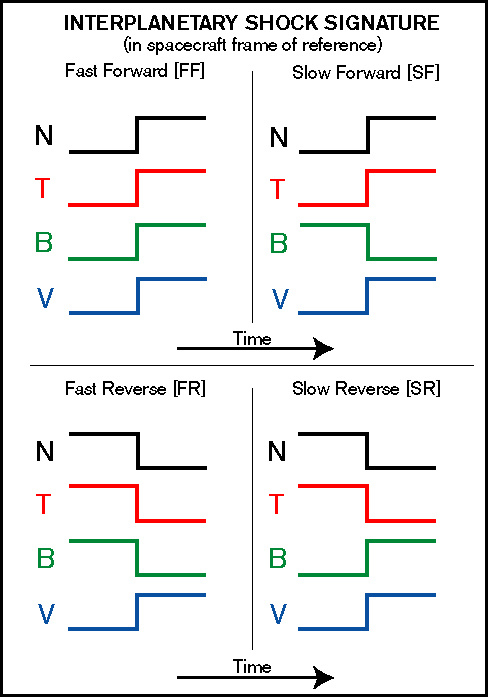
The observations of interplanetary (IP) shock waves and their causal and consequential relationships have been of special interest to the space science community for about three decades. The measurements of IP shock parameters by the WIND spacecraft provide an opportunity to investigate these collisionless shocks for a wide variety of shock types and conditions by state of the art instruments and often when other spacecraft are in fortuitous positions to provide new and exciting global studies from the Sun to the Earth. The shock characteristics of general interest in these studies include the following: Mach number strength; character (fast, slow, or intermediate), obliquity (parallel, perpendicular, oblique, depending on the angle between the up-stream magnetic field direction and the shock surface normal), sense of travel (forward or reverse, i.e., the shock is moving generally 'away from' or towards the Sun in the solar wind frame of reference), and separated according to cause, such as due to a Coronal Mass Ejection and/or a Magnetic Cloud acting as a shock driver, or a transient blast of plasma at the Sun, or from a solar wind stream impinging on another stream, often causing a corotating shock geometry, to name the prominent ones. [See J. E. Anderson, 1963, Magnetohydrodynamic Shock Waves, M.I.T. Press, Cambridge, MA, for definitions of fast, slow, and intermediate shocks, and also see D. A. Tidman and N. A. Krall, 1971, Shock Waves in Collisionless Plasmas, John Wiley & Sons, Inc. New York, NY; and see D. Burgess (1995) in Chapter 5 of Introduction to Space Physics, eds., M. G. Kivelson and C. T. Russell, Cambridge Univ. Press, for a brief tutorial review of the characteristics of collisionless shock waves and other IP MHD discontinuities based in part on observations from several decades of the IP spacecraft era.]
IP shocks at 1 AU are of interest in themselves, i.e., as interesting steepened nonlinear waves in a collisionless plasma, or as IP consequences of solar events or ejected mass, and/or as abrupt triggers of magnetospheric phenomena. The MFI team members and their collaborators are interested in all of these relationships and are actively pursuing some of the associated studies.
Most common types of shocks in the solar wind at 1 AU are fast forward (FF) shocks, but WIND data are revealing many slow (S) shocks [Whang et al., 1996, 1997; see the MFI Bibliography]. Intermediate shocks are very rare and, in fact, are believed by some not to be stable enough to be observed at all, but see Chao et al. [J. Geophys. Res, 98, 17443, 1993]; we will not discuss these further. Of secondary interest is usually whether the shock is traveling in a forward (F) or reverse (R) sense. Hence, four general categories are commonly of interest: FF, FR, SF, and SR. In the figure below idealized shock wave signatures for oblique shocks (the most common type) for these four categories are shown schematically in terms of the defining physical parameter changes across the shock ramp, where N is number density of the solar wind plasma, T is the proton plasma temperature, B is the magnitude of the magnetic field, and V is the speed of the plasma. The signatures are shown from the point of view of the observing spacecraft.


This page last updated July 10, 2001